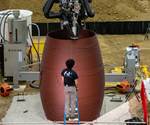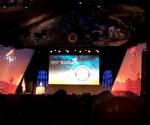NASA report captures decades of aerospace composites development
The updated, two-volume report details NASA's role in advanced materials and composites development since pre-WWII, and offers areas for future research.
NASA has released updated versions of its reports detailing the organization’s role in the development of composites and other advanced materials for aerospace applications.
The two-volume report covers NASA Langley Research Center’s (Hampton, Va., U.S.) advancements in the research and use of aerospace structural materials and manufacturing processes from pre-WWII to 2014, from light alloys through to polymers and composites.
The documents capture, through case studies and examples, the knowledge gained by NASA researchers over the years, present lessons that were learned, assess emerging technologies and identify challenges and areas for future research and improvement.
Electronic copies are available for free download on NASA’s Technical Reports Server:
- “Structural Framework for Flight I: NASA’s Role in Development of Advanced Composite Materials for Aircraft and Space Structures”
- “Structural Framework for Flight II: NASA’s Role in Development of Advanced Composite Materials for Aircraft and Space Structures”
Related Content
-
Manufacturing the MFFD thermoplastic composite fuselage
Demonstrator’s upper, lower shells and assembly prove materials and new processes for lighter, cheaper and more sustainable high-rate future aircraft.
-
PEEK vs. PEKK vs. PAEK and continuous compression molding
Suppliers of thermoplastics and carbon fiber chime in regarding PEEK vs. PEKK, and now PAEK, as well as in-situ consolidation — the supply chain for thermoplastic tape composites continues to evolve.
-
Plant tour: Albany Engineered Composites, Rochester, N.H., U.S.
Efficient, high-quality, well-controlled composites manufacturing at volume is the mantra for this 3D weaving specialist.

.jpg;width=70;height=70;mode=crop)











